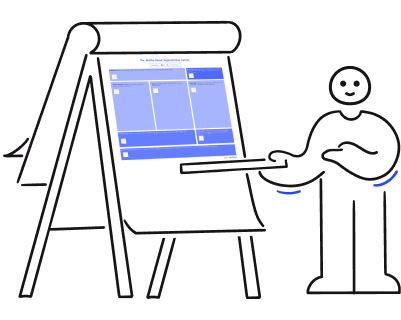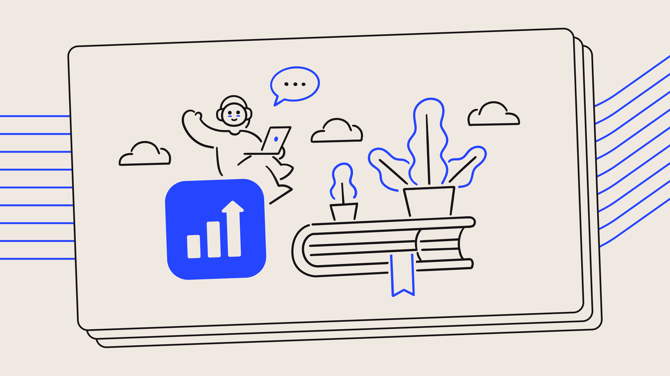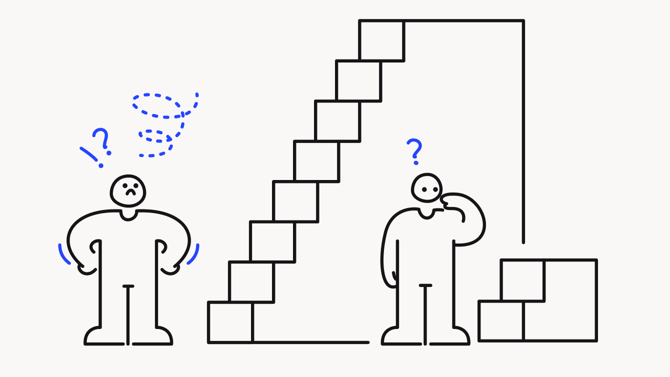With an unemployment rate of 4.9% in the Province of Quebec, recruiters face a full-employment market.
It is hardly surprising to see that the number of recruitment firms is growing rapidly, to the point where LinkedIn is now making it a business model.
Potential candidates have more power than ever before over the choice of companies and working conditions they seek.
However, the real challenge for companies is not to recruit a new employee, but to keep them.
If the hiring process can be long, expensive and unsecured, the real investment should be in the staff integration program.
By taking the time to set up a good reception system, you will be able to maximize the retention of new employees and make the most of each investment made upstream.
Here are some ways to build an integration program that promotes the success of your recruitment.
Empower your organization with the skills-based canvas.

What's in this article
Establish a good onboarding program
Investing in the creation of an onboarding program makes it possible to standardize the processes.
By predefining the stages and components of the program, you will obtain a reusable tool for each of the new hires. It is, therefore, a job that will, in the long term, save major time and money.
The welcome and integration program identifies the learning resources necessary for the development of a new employee.
For its manager, it is a way of ensuring that the best talents have the environment suitable for their development. The program should include activities that promote understanding of the position, the corporate culture and the work environment. It should allow staff in training to be exposed to strong leadership and the recognition of their peers.
An effective program will increase not only retention but also the productivity of the new employee.
Integration following the recruitment process
Begin to highlight your onboarding program at the final stages of your recruitment process. This will facilitate your search for the rare pearl by identifying the level of motivation and interest of the candidate facing the next steps to come.
Do not hesitate, in the job description and in the hiring process, to repeat the conditions and expectations regularly.
When signing their employment contract, employees should know exactly what they will give and receive in exchange. Their level of commitment and satisfaction is intimately linked to the achievement of their expectations.
Complementing the job description, the vision of the role paints a portrait of the objective of the work:
- What needs to be done?
- How should it be done?
- Why it is important to do it.
Defining roles and responsibilities determines what problems need to be solved and what tools are available to get there. We must also recognize the stakeholders who are involved in the success of the expected work.
It is essential to list the performance indicators and milestones related to the position. By knowing the quantitative and qualitative evaluation measures, the new employee will be more involved in his success.
These criteria will also allow the organization to justify the role and measure the resulting value creation.
The first days of work (0 to 7 days)
Once recruitment is complete, the first week of work plays a key role in the employment experience of the newcomer.
In order to reassure him, it is a good idea to send him the integration plan beforehand.
One of the advantages of using a training platform to standardize your process is to make several preparatory contents available for the first day available from a distance. Reference is made here to the employment contract to be completed, legal documents, basic training courses presenting the mission and values of the company, etc.
Thus, they will know in advance what they will do, where they should go and who they will meet.
The objective of orientation activities is to provide the tools, information, and contacts required to acclimatize the new employee.
These activities can be done in a variety of ways, such as online training, exercises, observation, etc. One-on-one meetings are a great way to build new relationships and exchange ideas.
To facilitate the preparation of the integration and reception plan, here are some key activities to plan for:
- Welcome meeting
- Presentation of the integration agenda
- Presentation of the corporate culture
- Presentation of the work environment
- Introduction to the team and other departments
- Revision of roles and responsibilities (including expectations)
- Installation of the workspace
- Creation of profiles, emails, etc.
- Work systems training
- Assigning projects
To save time, many of these activities can be included in your online training strategy. Using videos, documents, and questionnaires, the employee can progress in their integration at their own pace and accelerate their development independently.
The first month in the organization (0 to 30 days)
The mistake to avoid is to think that the training of a new employee should be concentrated in the first days of work.
In reality, critical learning occurs at the heart of the first month, which is why it is important to organize it well.
The goal is that by the end of the 30 days, the employee will be able to start building by himself.
To train effectively, time is divided with 70% of projects, 20% of mentoring and 10% of structured learning. This tactic invites the employee to get directly involved in his training and to develop at the same time. This educates the employee, upon arrival, to take a portion of the responsibility for their development.
By working on concrete projects, he will push his own limits and learn from his mistakes. The ideal is to suggest projects that require periods of observation, research, and collaboration.
Outside the job, the employee must know the company, its goals and the interaction between the different departments.
Informing him of the internal structure, strategic plan, and market conditions invite him to submit new ideas. Knowing what the organization is doing and for what purpose, it will be much easier to introduce the "how"!
In addition to job-related training, adding a personal development component is an interesting approach. It gives the employee practical tools to improve his leadership and increase his general knowledge.
Rewarding the new employee's ability to analyze and adapt is more important than the results of the work done. It should be understood that he wears two hats during the first month of work. On the one hand, he learns to do his job, and on the other, he has to integrate into the culture of the company.
To assess the success of the reception and integration program, it is preferable to rely on learning progress, which can be measured using an internal training platform like Workleap LMS.
Retention beyond the first 30 days
The first 30 days of an employee's onboarding program are mainly dedicated to introduction, training, and education. However, learning does not stop there.
Once equipped and trained, the employee enters the construction phase. During his second month of work, he will be more independent, but coaching and mentoring must persist continuously. The third and last month of integration will be the evaluation period. It is during this that we can determine whether the learning is put into practice.
From recruitment to the end of the probationary period, each phase of reception and integration has objectives that contribute to the growth of the organization.
When the program is effective, it helps new employees to grow and reach their highest level of performance.
At the end of the first three months, they will be competent, efficient and integrated.
This will definitively affect their desire to continue to grow within the organization and thereby maximize retention.
Discover, manage, and grow your team’s skills to unleash their potential and retain your rising stars.




